Anubias: Your Guide to Popular Types and Easy Care for Aquariums
Hey, aquarium fans! Anubias are the tropical treasures of Africa’s streams, rivers, and marshes—lush, green, and ready to shine in your tank, whether submerged or peeking out emersed. With their stunning leaves and vibrant hues, they’re perfect for foregrounds, midgrounds, or even a full Anubias-only aquascape. Tough as nails yet gorgeous, they’re a must-have—but they do need a little love to stay healthy. Let’s explore the top Anubias varieties and how to keep them thriving—your tank’s about to get a serious glow-up!
- Popular Types of Anubias for Planted Aquariums
- Anubias barteri var. barteri - Broad-Leaved Anubias
- Anubias barteri var. nana - Anubias Nana
- Anubias barteri var. nana 'Petite' – Anubias Nana Petite
- Anubias nana 'Golden'
- Anubias barteri 'Coin Leaves'
- Anubias barteri 'Coffeefolia'
- Anubias Gracilis
- Anubias barteri 'Angustifolia' – A. lanceolata
- Anubias congensis (afzelii)
- Anubias heterophylla
- How to Care for Anubias
- Common Diseases and Treatment
- Frequently Asked Questions
Popular Types of Anubias for Planted Aquariums
Anubias barteri var. barteri – Broad-Leaved Anubias
- Usage: background, midground in large tanks
- Difficulty: easy
- Growth: slow
- Height: 8 – 12+ inches (20 – 30+ cm)
- Lighting: low
- CO2: low
Broad-leaved Anubias, or Anubias barteri var. barteri, is the big sibling in the family—long stems and leaves twice the size of others, stretched out like elegant paddles. At 12 inches tall, it’s a background champ or a midground standout in bigger tanks. Once it settles in, it’s a steady grower—new setups might need a sprinkle of extra care, but it’s worth it for that robust, leafy vibe!
Anubias barteri var. nana – Anubias Nana
- Usage: midground
- Difficulty: easy
- Growth: slow
- Height: 2 – 4+ inches (5 – 10+ cm)
- Lighting: low
- CO2: low
Anubias Nana is the mid-sized classic with that signature green glow. It pairs beautifully with giants like Echinodorus or its golden cousin, Anubias Nana ‘Golden,’ for a color pop. At 2-4 inches, it’s a gap-filling wizard in foregrounds or midgrounds—thriving in tanks or terrariums with zero fuss. Think of it as your layout’s trusty sidekick!
Anubias barteri var. nana ‘Petite’ – Anubias Nana Petite
- Usage: foreground, midground, nano planted tanks
- Difficulty: easy
- Growth: slow
- Height: 1.2 – 2+ inches (3 – 5+ cm)
- Lighting: low
- CO2: low
Anubias Nana ‘Petite’ is the tiny titan—maxing out at 1-3 inches with leaves under half an inch. Thick-stemmed and hardy, its dark-to-light green foliage earns it the nickname “growing plastic plant.” Aquascapers adore it for nano tanks or miniature landscapes—small leaves, big impact, and a breeze to maintain!
Anubias nana ‘Golden’
 Anubias barteri nana Golden #ad
Anubias barteri nana Golden #ad
- Usage: midground
- Difficulty: easy
- Growth: slow
- Height: 2 – 4+ inches (5 – 10+ cm)
- Lighting: low
- CO2: low
Anubias Nana ‘Golden’ sparkles with light green, lime-golden leaves—a sunny twist on the darker Anubias crew. It’s a midground gem, slow-growing but tough as ever. Pair it with darker plants for a glowing contrast that screams beginner-friendly elegance.
Anubias barteri ‘Coin Leaves’
 Anubias barteri Coin Leaves #ad
Anubias barteri Coin Leaves #ad
- Usage: midground
- Difficulty: easy
- Growth: slow
- Height: 2 – 4+ inches (5 – 10+ cm)
- Lighting: low
- CO2: low
Anubias barteri ‘Coin Leaves’ rocks round, heart-shaped leaves—like shiny quarters on long stems. Sized like Anubias Nana, it’s a midground standout with a unique circular charm. Low to moderate light keeps it happy, and herbivores won’t touch it—pure, easy beauty!
Anubias barteri ‘Coffeefolia’
- Usage: midground, background
- Difficulty: easy
- Growth: slow
- Height: 12+ inches (30+ cm)
- Lighting: low
- CO2: low
Anubias ‘Coffeefolia’ is a tall drink of coffee—up to 12 inches with ruffled, oval leaves that start brown and mature to green. Its 3-inch leaves and 3-5-inch rhizome grow in lush clumps over years. A slow, striking pick for midgrounds or backgrounds!
Anubias Gracilis
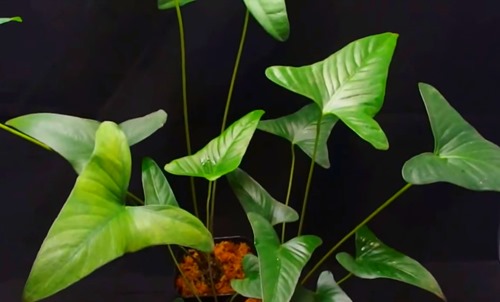
- Usage: midground, background
- Difficulty: easy
- Growth: slow
- Height: 4 – 8+ inches (10 – 20+ cm)
- Lighting: low
- CO2: low
Anubias Gracilis is pure elegance—long, spade-like leaves up to 3-4 inches in a triangular dance. It’s a big-tank beauty, thriving sideways in the background or midground. Submerged, it stays smaller but just as graceful with minimal care.
Anubias barteri ‘Angustifolia’ – A. lanceolata
- Usage: midground, background
- Difficulty: easy
- Growth: slow
- Height: 4 – 8+ inches (10 – 20+ cm)
- Lighting: low
- CO2: low
Anubias ‘Angustifolia’ (aka lanceolata) flaunts dark green, spear-shaped leaves—up to 6-7 inches long. It’s a hardy midground or background star that laughs at high pH and hardness. Pair it with golden Anubias for a killer contrast!
Anubias congensis (afzelii)
- Usage: midground
- Difficulty: easy
- Growth: slow
- Height: 6 – 8 inches (15 – 20 cm)
- Lighting: low
- CO2: low
Anubias congensis brings slender, pointy green leaves—less round, more edgy than its kin. At 6-8 inches submerged, it’s a robust midground pick growing faster than barteri but still chill. Enthusiasts love its low-maintenance vibe!
Anubias heterophylla
- Usage: midground, background
- Difficulty: easy
- Growth: slow
- Height: 7 – 10 inches (17.5 – 25 cm)
- Lighting: low
- CO2: low
Anubias heterophylla’s giant leaves—up to 12 inches—make it a bold midground or background choice. Sturdy and adaptable, it handles any water condition with slow, steady growth. A big, green statement piece!
How to Care for Anubias
Anubias are the laid-back champs of aquarium plants—low light, low nutrients, low drama. Here’s how to keep them happy:
- Water Basics: Check temp, pH, and nutrients for your tank size and crew—research pays off!
- Light Low-Key: They prefer the shadows—too much light invites algae to crash the party.
- No Burying: Don’t plant roots in gravel or sand; tie the rhizome to rocks or driftwood instead—rotting’s a no-go.
- Clean Vibes: Keep the tank fresh—pollutants hurt fish and plants alike.
Common Diseases and Treatment
Even these tough beauties can catch a bug—here’s what to watch for and fix:
1. Rotting Roots & Rhizome
A healthy rhizome is firm and green—sick ones turn mushy, discolored (white, yellow, brown, black), and stinky.
Treatment: Snip off the bad bits with clean scissors—give the healthy part a fighting chance!
2. Melting Leaves
Rotten rhizomes spread trouble, or emersed-to-submerged switches shock the leaves into melting.
Treatment: Tug or cut off dying leaves at the base—new ones will sprout.
3. Algae Growth
Too much light or nutrients turns leaves into algae magnets.
Treatment: Dial back light, shade them a bit, and ease up on ferts—less is more. More tips at this link.
Frequently Asked Questions
How to Propagate Anubias?
Split the rhizome! Pull the plant out, dry it off, and cut the rhizome with clean scissors—each piece needs 3+ leaves and roots. Don’t over-divide—tie cuts to rocks or driftwood and back they go!
Can Anubias Grow Out of Water?
You bet! Submerged, emersed, or fully out—they adapt like champs. For dry growth, keep roots in moist substrate, rhizome exposed.
How to Grow Anubias Fast?
Slowpokes by nature, but try a nutrient-rich substrate or water supplements, plus a dash of CO2—photosynthesis fuel for a growth spurt!
Does Anubias Need CO2?
Nope—it’s fine with fish-breath CO2. But crank up light and CO2, and it’ll grow faster than medium setups.
How to Attach Anubias to Rock?
Dry it off, tie the rhizome to a rock with fishing line or rubber band (not too tight), or dab superglue on the rhizome and press—roots will grip soon!
Can Anubias Grow in Sand?
Don’t bury roots in sand—tie the rhizome to a rock and set it on top. It’ll anchor itself without rotting.
How to Trim Anubias?
Trimming’s rare—snip long roots with a sharp knife for neatness. Gently pull old leaves at the base; cut stems 2 inches from the rhizome on crowded plants—new growth follows!

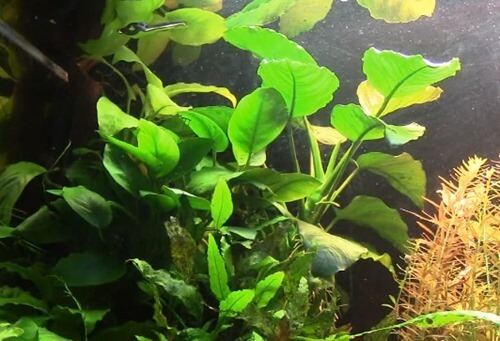 Anubias barteri #ad
Anubias barteri #ad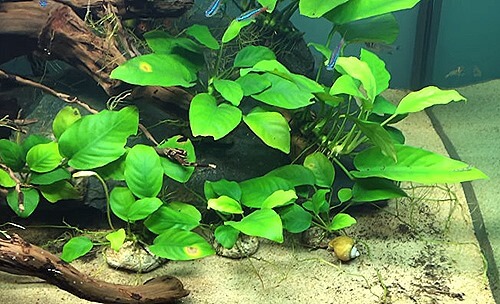 Anubias nana #ad
Anubias nana #ad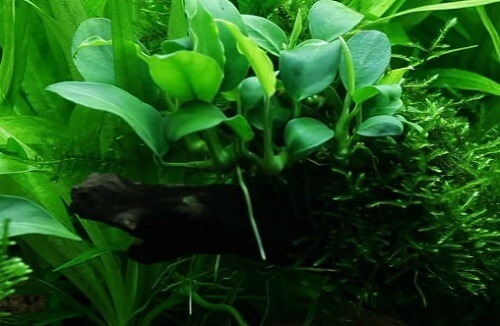 Anubias nana petite #ad
Anubias nana petite #ad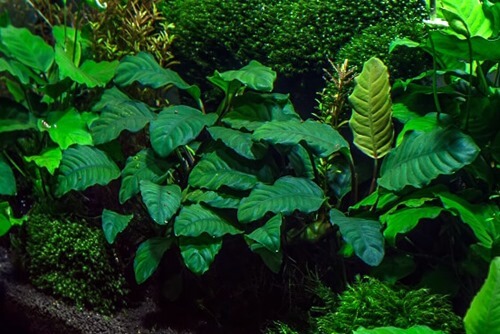 Anubias Coffeefolia #ad
Anubias Coffeefolia #ad Anubias lanceolata #ad
Anubias lanceolata #ad Anubias congensis #ad
Anubias congensis #ad Anubias heterophylla #ad
Anubias heterophylla #ad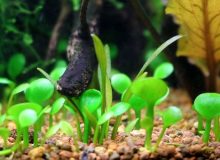
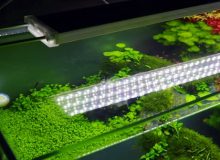
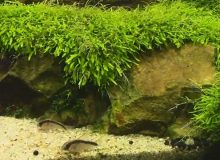
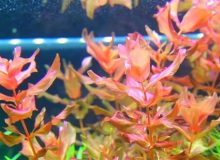
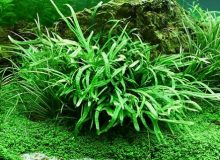
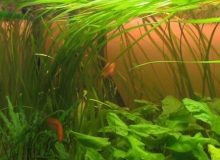
Leave a Reply